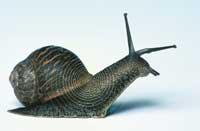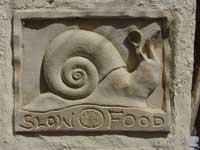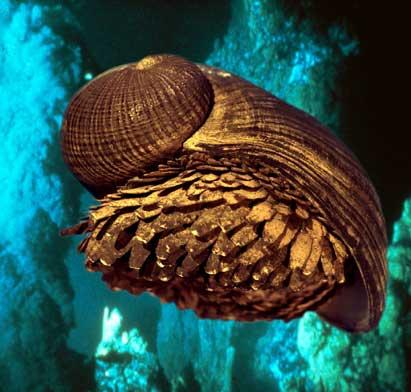In the age of speed at the speed of snails
2008/07/15 Lakar Iraizoz, Oihane - Elhuyar Zientzia

Increasingly developed technology drives us to live against the clock. Well, UK Bournemouth University has launched a project called slow art to encourage people to take time to see how technology works. Among other things, they have created a system to send emails at snail speed: You have been called Real Snail Mail, Royal Snail Mail. It will be officially presented in August at an international congress and exhibition on infographics and interactive techniques in Los Angeles. However, it is already available on the website created for this purpose.
However, the user will have to fill the pockets with patience, since the email, instead of arriving suddenly, will need days, weeks or months. As the name suggests, the emails sent by this route to their destination, the Muriel, Austin and Cecil snails, are authentic snails.
Postarias’

These snails are located in a container located in the center of the road to which emails are directed. Therefore, this special email, instead of making the usual way, makes a cut in the snail container.
The work of the snails is that the message exceeds that pause in order to resume the normal path. They have placed a chip on the snails. The chips exchange information with e-readers in the area. The only condition is that the chip and the reader must be very close. Therefore, snails can get the messages before or after.

First, a snail must approach the electric reader that has been unable to move forward, since it is the reader who has the message. Of course, snails don't know that, so the message should wait until it comes to chance. Once approximate, the signal passes from the reader to the snail chip.
The message should have gone half the way. In the next step, the snail must approach the reader who will collect the information it carries on the chip, again randomly. Once arrived, yes, it would pass the message in the body to the reader and return to the normal route until it reaches the corresponding address.
Goal, a quiet life
As has been said, this symbology system is part of the slow art project. It is not the only movement, nor the first, that has been created to face the rapid life that reigns today. The first was created in 1986, called slow food, because they wanted to promote the opposite of the idea that drives fast food. Since then there have been many movements with prefixes slow life and slow city (cities that do not exceed 20 km/h, with many green areas to walk, without advertising, etc. ). Guess what is the symbol of these moves? What snail?
Published in Deia

Gai honi buruzko eduki gehiago
Elhuyarrek garatutako teknologia






